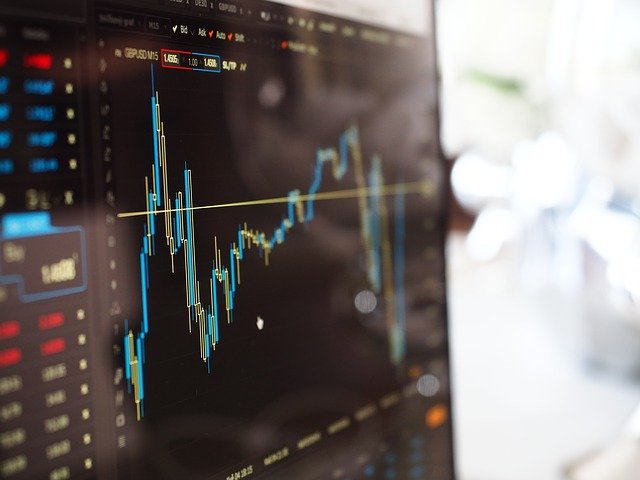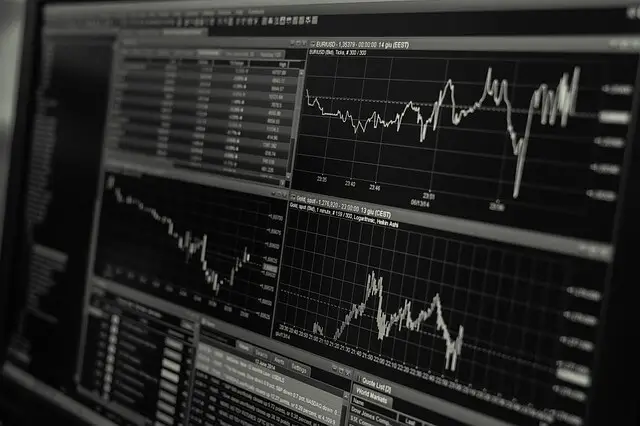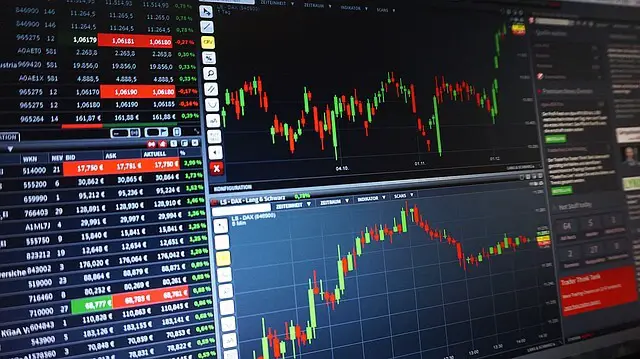Information presented on this web page is intended for informational and educational purposes only and is not meant to be taken as legal, financial, investment or tax advice. We do not accept any responsibility for any trading or investment related losses. Please review our disclaimer on before taking action based upon anything you read or see.
Many people think they know everything about stocks, but they’re not so sure. So getting a good understanding of what makes a stock go up or down will give you a better perspective on investing your money. So, without much more to say, let’s get into business! Let’s check what influences a stock to go up or down in the stock market. We studied several reports from significant stock market firms and simplified them for you in the following lines.
According to research we have done, stock rates fluctuate due to supply and demand. The price of a stock rises as people want to purchase it rather than selling it. When people try to sell stock rather than buy it, the price drops.
However, predicting whether a stock will have more buyers or sellers takes more analysis. Stocks are attractive to buyers for various reasons, including low valuations, new product lines, and industry hype.
Remember that the stock market operates is the first step in determining what causes a stock to rise or fall in value; knowing what makes a stock attractive will help you predict which ones are more likely to increase. There’s a real chance that you can succeed with investments if you look at better market efficiency! Some reports have shown that this efficiency relates to the kind of stocks you buy.
Let’s start with this!
What Makes a Stock Go Up?

Every day, billions of shares of stock are bought and sold, and this buying and selling determine stock values. When someone offers to buy shares at a higher or lower price than the previous sale, stock prices rise and fall. This dynamic is governed by supply and demand in the short term.
Here’s the unpalatable truth: Expectations influence stock price movement. The current price of a stock is the present value of potential cash flows in strictly theoretical terms. You can begin to feel inept for not understanding what that is or how to measure it. However, you must get in touch to know that most retail investors (for example) have no idea how to do it.
Stock exchanges are a share of ownership you have in a physical corporation. Stock shares enable investors to buy or sell an interest in a business via a bidding process on a stock exchange. Sellers post prices at which they want to sell their stock, and buyers do the same for prices they wish to purchase shares. The bid-ask spread is the term for this.
Finally, how optimistic buyers are about a stock’s prospects determines its demand. In the short term, positive business developments such as quarterly earnings report that exceed expectations, analyst upgrades, and other positive business developments can prompt investors to pay a higher stock price.
What Factors Influence the Value of a Stock?

Since getting more buyers than sellers physically push up a stock price, buyers must be drawn to it. Valuation is one of the factors that attract buyers to a stock.
Companies can be valued in various ways, but earnings per share and the P/E ratio are two of the most common. In the long run, a stock’s value is determined by the income produced by the underlying firm. Investors who assume a company’s profits can rise in the long run or who believe a stock is undervalued will are willing to pay a higher price for it now, regardless of short-term events.
On the other hand, interest rates (changes) always end up affecting stock prices. If the economy slows down or goes into recession, central banks will begin to use expansionary monetary policies. In other words, they will lower interest rates to stimulate the economy. Because of lower interest rates, it is easier to borrow money. On the one hand, investors can borrow money and buy stocks more efficiently.
On the other hand, companies have lower operating costs, which translates into higher revenues and, as a result, higher stock prices and often higher dividends. The opposite happens when interest rates rise.
When interest rates are low, investors cannot earn much return on bonds or other asset classes, leading them to risk investing more in the stock market.
The Earnings Base

Earnings per share (EPS) are a metric that measures a company’s profitability. Investors are generally more active in businesses with increasing earnings. Earnings per share are also a metric used to compare businesses in the same industry. For instance, if a company in the same sector is twice as profitable as a rival, it is more likely to attract investors’ attention. Another reference measure used by investors to value stocks is the P/E ratio, or price/earnings ratio.
Simply put, the P/E ratio is the price of a stock divided by its earnings. On basic levels, a business with a lower P/E than another in the same sector might be more appealing to investors since it can be considered less risky.
Reported Earnings Are a Choice
Demand for stocks in general, or stocks in a specific stock market segment, rises from time to time. Individual stocks will increase without any company-specific news if broad-based demand rises. Consider the following scenario: Consumers increased their online spending at the expense of brick-and-mortar stores due to the COVID-19 pandemic. Some investors expect this shift will continue, resulting in higher demand and prices for e-commerce stocks across the board.
The Basics: Supply and Demand

Stock prices are determined by what you, we, and a few million other people expect the stock price to be in the future. If we all believe the price of Netflix will rise, we will all purchase Netflix, and the price will increase as a result. If Netflix releases negative news, we become cynical right away and sell our Netflix stock. As a result, the price drops. All of this is based on an implied interpretation of the current value of potential cash flows. Hey, but only in a theoretical sense. You can also check these S&P 500 numbers too!
Many financial analysts try to understand the current price of a stock due to some financial ratios. The P/E (price-to-earnings) ratio is the most common. That’s all the trading is about!
An Example of Supply and Demand
You can find tons of info on the internet. However, we can share this indisputable fact with you. Facebook (FB) has a P/E of 40, Amazon (AMZN) has a P/E of 173, Netflix has a P/E of 336, and Google (GOOGL) has a P/E of 29 as of March 17, 2017. Analysts refer to these four firms as the “FANG stocks” because of their first letters. Of course, the four companies are entirely different and, to some degree, compete with one another.
What accounts for such a wide variety of P/E? To put it another way, how can Amazon be worth 173 years of its earnings when Google is only worth 29 years?
Why would anyone pay the price for a stock share worth 29 years’ worth of profit, let alone 336 years’ worth?
Current Market Trends

The market is rising because stocks are often increasing. Investors use the investment approach to purchase shares that are growing and sell ones that have been falling, causing a cycle of growth in prices. This momentum builds on itself, propelling rising share prices ever higher. This approach, also known as relative strength investing, selects stocks based on market conditions rather than conventional valuation metrics.
FPI/FII Net Investment (buy vs. sell trades) and Nifty50 Index
As an intelligent investor, you can look at FPI or FII net investment data on a regular (for short-term traders) or monthly (for investors) basis to get a sense of overall FPI or FII sentiment about the world index stock market.
The data comes from the NSDL website, which publishes consolidated data based on NSE and SEBI inputs. We urge investors to keep track of this information because it will help them make better investment decisions.
Long-term investors should pay more attention to FPI or FII monthly market activity results. It’s a very bullish sign if the FPI or FII investment grows month after month and a significantly bearish signal if it falls month after month and some other times.
Here’s why the rise and fall of stock prices don’t need to stress you out
For the most part, saving is a long-term commitment. Constantly monitoring your savings is not only needless, but it can also lead to increased stress; the same can be said for reading so much stock market news. This will make you more likely to cause rash, irrational choices.
What Makes a Stock Go Up: FAQs?
Global dynamics adjust stock values daily. When more customers want to purchase a stock (demand) than people who want to sell it (supply), the price rises; if more people wanted to sell a stock than purchase it, the collection would exceed the demand, and the price would decline. It’s easy to understand supply and demand.
The reason is that supply and demand do also decide stock prices. When you sell, you can see no difference in price because the sums you are buying are negligible. If you want to purchase or sell a considerable quantity of anything at once, the cost can fluctuate.
When demand is higher than supply, prices increase. When the number of people wanting to buy a stock outnumbers those who want to sell it, then you get an uptick in value. Market capitalization for stocks reflects this by multiplying its price per share with how many shares are available on the market currently; as such, if there are more interest buyers and sellers combined than before, that means we’ll see growths in the overall company worth too!
If a stock’s price rises in higher-than-normal value, it means buyers are backing the rally, and the stock will continue to rise. A declining market pattern with high volume, on the other hand, indicates that the trend is expected to continue downward. A large trade volume (as Tilray) may also signal a pattern shift.
Look for patterns in the growth of a company’s profits. Is it true that profits rise over time? If this is the case, it’s a positive sign that the business is doing everything well. Even a minor, consistent change over time may be a good predictor. However, for the stock to be worth investing in, earnings growth and valuation must go hand in hand.
When a stock’s price falls to zero, the owner loses all he or she has invested – a -100 percent loss. Since the stock is useless, the creditor holding a short interest does not have to repurchase the shares and sell them to the seller (usually a broker), resulting in a 100 percent return on the temporary position.
Volatility rises as the stock price falls, which may be a lucrative gamble for someone willing to take chances. While you can’t personally invest in VIX, some items can help you benefit from elevated market uncertainty.
Investing in stocks implies that you want to grow your money, but there is no such thing as a free lunch in this country. As a result, to gain more, you must be willing to take risks. Aside from that, you’ll need persistence, expertise, a focused attitude, concrete financial targets, and a well-thought-out investing strategy.
No one will guarantee that buying in the stock market can make you wealthy, but there is a good possibility that the capital can rise if you hold the stocks for a long time.
When your stock has broken out, take most of your earnings when they hit 20% to 25%. You could leave the whole position if market conditions are choppy and good returns are difficult to come by. Concentrate on obtaining base hits. Take much of your returns between 20% and 25% to expand your portfolio significantly. Though it goes against human nature, the best time to sell a stock is when it’s already rising and looking good to everybody.
You can collect shareholder returns, which are parts of the company’s profits, in addition to the benefit you can gain from selling securities. Dividends are often paid quarterly in cash, but you can also receive rewards in the form of additional stock shares services.
The T+3 rule states that when you buy stocks, the dealer must collect your payment within three business days of the sale being completed. If you sell supplies, you must send them to your broker within three days of the sale.
It makes no difference if you purchase ten shares for $100 or 40 for $25. Many brokers only authorize you to own whole shares, so if your budget is 1000 dollars, but the share costs 1100 dollars, you’ll run into problems.
Stock investing is one of the most successful ways to build capital over time. However, to be a successful investor, you must have access to reliable, high-quality data. With too much investment-related noise and spam out there, finding expert-level outlets with actionable and up-to-date knowledge is essential for building a bespoke and diversified stock portfolio. Yahoo Finance is perhaps one of the best places we can suggest. This site has a financial glossary for newcomers who want to learn about accounting, finance, and economics.
Bottom Line
Offer and demand laws explain the fluctuation of stock prices. But how do investors and analysts come to decide whether a stock is worth buying or selling at a given price?
Investors buy stocks for profit. This profit comes partly from the dividends the company distributes to its shareholders (their share of stock and the company’s profits) and partly from the increased value of the shares. So, when assessing the value of a particular company’s stock, it is essential to consider its financial health.
Investors look for a company with a strong track record, which generates high profits and pays consistently good dividends. They also look at the company’s prospects and examine how a company compares to its competition and whether experienced, responsible people run it following current trends.
If investors believe a company can increase its efficiency or produce new and innovative products, its share price will likely rise. But if more intense competition is expected, a decrease in demand for its products may lower the value of a company’s stock.
A company’s stock price may increase or fall depending on whether investors believe that the industry as a whole is about to expand or contract.
Some industries, such as construction, are cyclical and depend heavily on interest rates. Even if a construction company is doing well financially and has many orders on its books, if the construction industry as a whole falls, when interest rates rise, investors may question the company’s ability to continue to grow. In this case, the company’s stock price may fall.
Knowing the factors that influence stocks’ movement and stock markets is essential for analyzing future strategies within an investment portfolio. Having as much information is as possible opens up more excellent opportunities to win in the stock market.





